By 1999 Salmonella had taken a form that would lead them on to many successes. They’d acquired a new singer Tiki Taane, a charismatic, handsome and cool dude to front the less remarkable band. But most importantly, they’d stumbled across their sound, what Wikipedia terms “a unique Pacific style of dub/drum ‘n’ bass/reggae/hip hop and groove-based rock” and what others may unflatteringly call barbecue reggae.
The “For the Love of It” video is like a manifesto of what the new Salmonella Dub is all about. The opening shot in the video is a wide panorama of a pristine lakeside area, empty of people. It’s the way New Zealand has been portrayed in tourism propaganda for over a hundred years.
We soon meet the band as they travel through rural New Zealand, hanging out at the beach and by waterfalls. They finally arrive at their destination – music festival the Gathering. This lets the band engage in the very modern, very manmade act of performing amplified music, but keeping it in a natural setting.
There’s lots of random footage of the Gathering, which is a nice record of that period of the late ’90s. And with that context, it seems obvious why Salmonella Dub would have appealed to a field full of loved-up festival-goers.
But the live performance almost takes a backseat to the footage of the band enjoying the great outdoors. There’s a game of beach cricket, skateboarding, fishing, riding an inner tub in a river and, yes, even a barbecue. “Stripping it back to the roots,” declares Tiki in the lyrics, and that’s exactly what this video it all about.
Occasionally there’ll be a glimpse of the band indoors, recording stuff in dark rooms. But that never lasts for long. This is a sunny, summery video to remind people of the real wicked-as time they had on their holidays.
Best bit: the stilt-walker performance artist at the Gathering.
Director: Rongotai Lomas
Ngā Taonga Sound & Vision
Next… eat your greens.
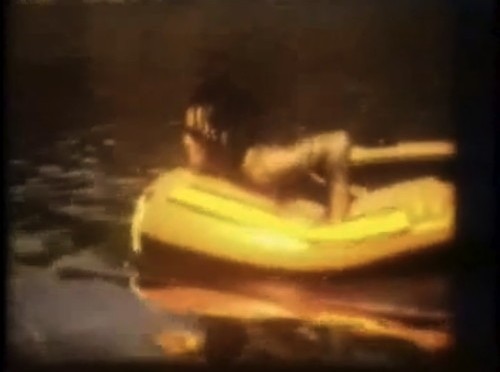
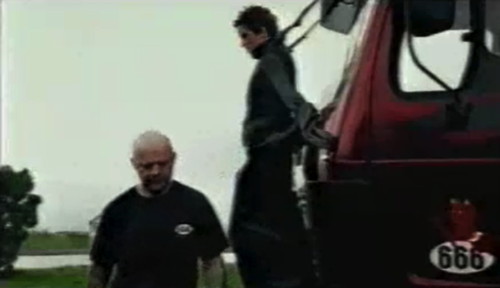
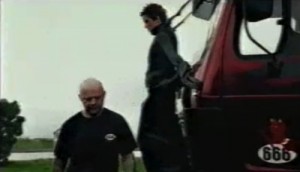 “Beautiful” is a sweet love song with a dark edge and delightful lyrics like “you are the best thing that’s happened to me / since I fell on my face on Tuesday”. But Fur Patrol being Fur Patrol, they’re not going to make a cute, quirky video. No, they’re going to get a little weird.
“Beautiful” is a sweet love song with a dark edge and delightful lyrics like “you are the best thing that’s happened to me / since I fell on my face on Tuesday”. But Fur Patrol being Fur Patrol, they’re not going to make a cute, quirky video. No, they’re going to get a little weird.
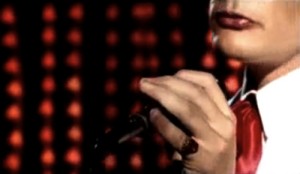 Finally, Shayne Carter has figured out how to use ProTools and has turned Dimmer into a fully fledged musical project, if not a band. The video takes its inspiration from Elvis’ ’68 Comeback Special. There’s a black background with red light spelling out DIMMER and Mr Carter wears a white suit with a brilliant crimson tie.
Finally, Shayne Carter has figured out how to use ProTools and has turned Dimmer into a fully fledged musical project, if not a band. The video takes its inspiration from Elvis’ ’68 Comeback Special. There’s a black background with red light spelling out DIMMER and Mr Carter wears a white suit with a brilliant crimson tie.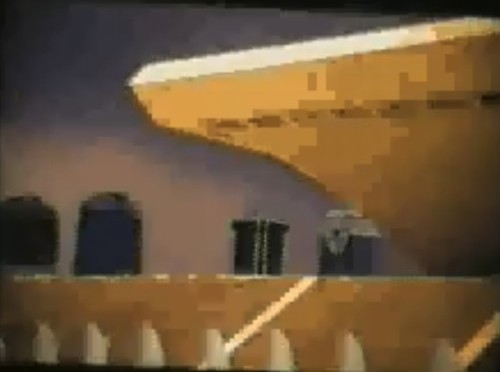
 YouTube uploader HeisW140 notes that the video came off a Baitercell CD-ROM, the first released by label Kog Transmissions. And it seems fitting that at least one music video from the ’90s should have had the CD-ROM treatment, blocky low-res image and all.
YouTube uploader HeisW140 notes that the video came off a Baitercell CD-ROM, the first released by label Kog Transmissions. And it seems fitting that at least one music video from the ’90s should have had the CD-ROM treatment, blocky low-res image and all.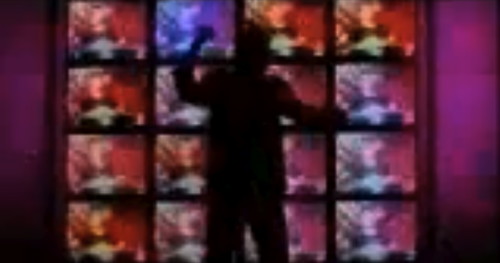
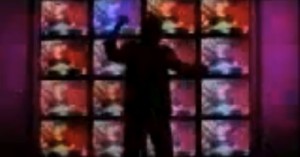 Weta! It’s nice to see them. Sadly only 56 seconds of this video is available online and it’s a pretty lowres version, but good on Pandanya for uploading it to YouTube.
Weta! It’s nice to see them. Sadly only 56 seconds of this video is available online and it’s a pretty lowres version, but good on Pandanya for uploading it to YouTube.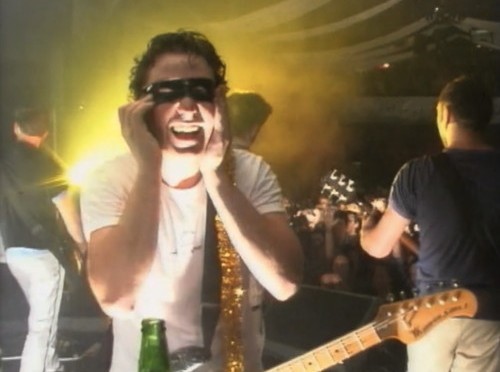
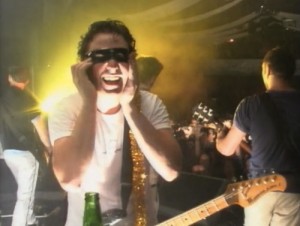 What happens when a band is too busy touring to make a new music video? They make a music video cobbled together from footage of life on the road. But somehow the Feelers’ version of this ends up being kind of crazy.
What happens when a band is too busy touring to make a new music video? They make a music video cobbled together from footage of life on the road. But somehow the Feelers’ version of this ends up being kind of crazy.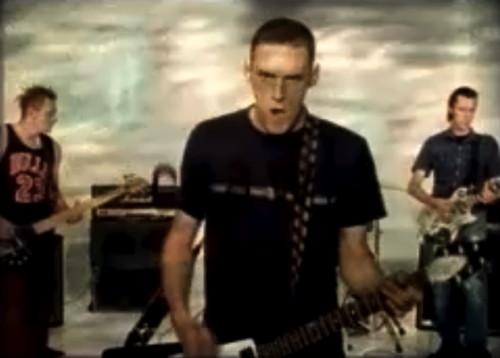
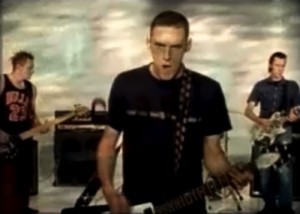 Shihad’s labelmates Slim came from the remains of Pumpkinhead. “Bullet in my Hand” is a satisfactory short and punky tune that looks to have been directed by guitarist/singer Aaron Hogg.
Shihad’s labelmates Slim came from the remains of Pumpkinhead. “Bullet in my Hand” is a satisfactory short and punky tune that looks to have been directed by guitarist/singer Aaron Hogg.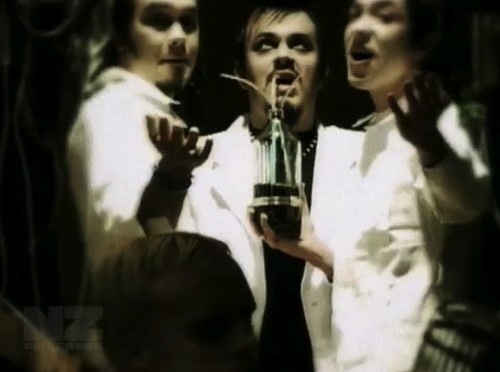
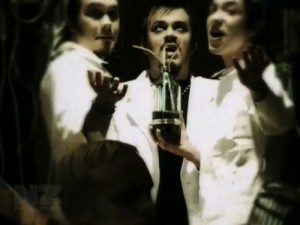 At the time this song was released, I felt very energised by the sarcastic opening line: “Well, I trust the police and the government!” Whereas now it seems like boilerplate angry young man. But I like what Shihad have done with the video. Directed by Reuben Sutherland, it’s taking a fairly standard video treatment – the mad scientist – and giving it a really dark, icky edge. This is not a musical performance video, but Shihad have never been afraid to take themselves out of traditional rock settings.
At the time this song was released, I felt very energised by the sarcastic opening line: “Well, I trust the police and the government!” Whereas now it seems like boilerplate angry young man. But I like what Shihad have done with the video. Directed by Reuben Sutherland, it’s taking a fairly standard video treatment – the mad scientist – and giving it a really dark, icky edge. This is not a musical performance video, but Shihad have never been afraid to take themselves out of traditional rock settings.
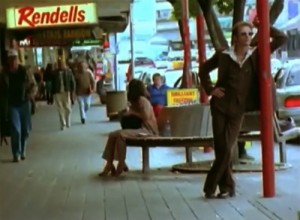 The Peter Stuyvesant Hitlist were known for their comedy loungey live styles, but they tone it right down for their second single, “Ode To K Road”. The video, made by Andrew Moore, Steve Sinkovich and Stuart Page, consists of sped-up footage of K Road, mostly with members of the band just standing around.
The Peter Stuyvesant Hitlist were known for their comedy loungey live styles, but they tone it right down for their second single, “Ode To K Road”. The video, made by Andrew Moore, Steve Sinkovich and Stuart Page, consists of sped-up footage of K Road, mostly with members of the band just standing around.
 The video opens with the ruins of an old church. One wall has what were once a series of three crosses moulded in the concrete, but the right-handed cross has broken away to a giant hole. “I’m an atheist,” King Kapisi asserts. “Glad to meet ya!” Well, nice to meet you too.
The video opens with the ruins of an old church. One wall has what were once a series of three crosses moulded in the concrete, but the right-handed cross has broken away to a giant hole. “I’m an atheist,” King Kapisi asserts. “Glad to meet ya!” Well, nice to meet you too.